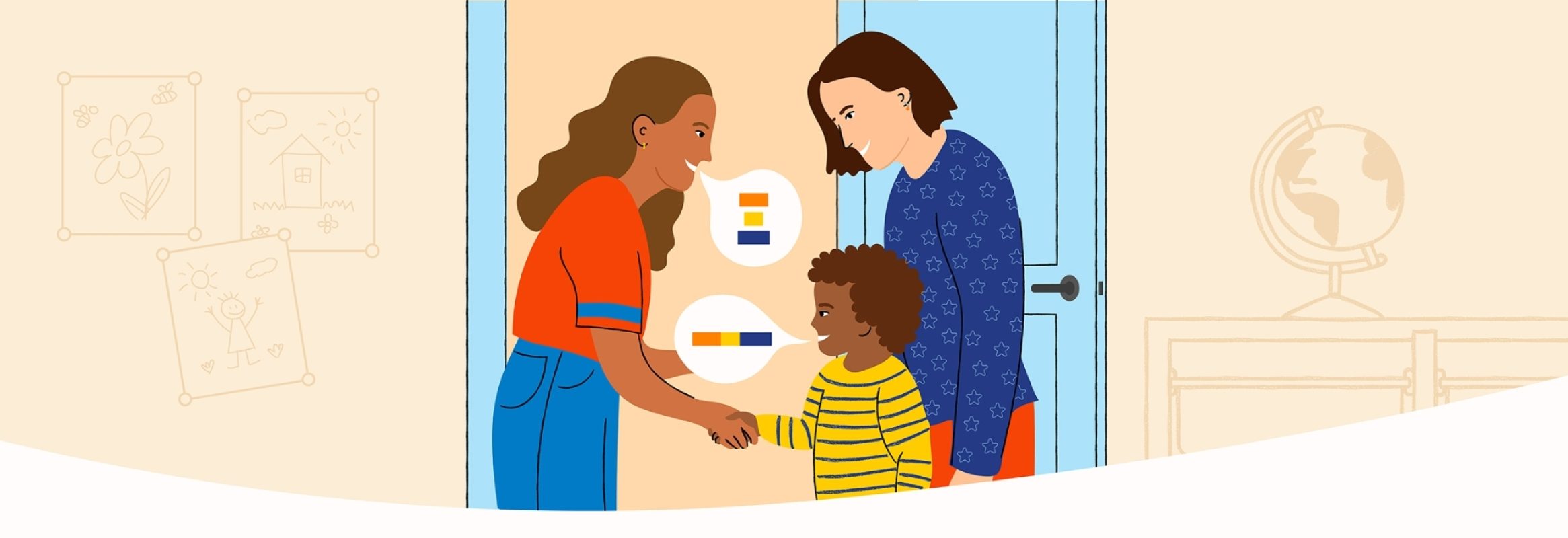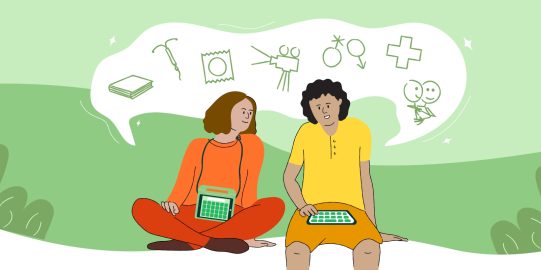What is Gestalt Language Processing?
Gestalt Language Processing (GLP) is a form of language development that starts with whole memorized phrases and moves to to single words.The basic unit of language is generally a word. We construct language word by word to reach our meaning. For Gestalt Language Processors, the basic unit of language is not a word; it is a 'chunk' of language. For example, a gestalt language processor may think of "I'll be back" as one chunk. They would not recognize the words "I," "will," "be," "back" making up the phrase but would see it as a whole. We can call these 'chunks' gestalts or scripts. You may also have heard this referred to as 'delayed echolalia.'
Gestalts are a normal part of language development. All children have some gestalts, even if they mostly start speaking word-by-word. For example, most children (and adults!) process "you're welcome" as a gestalt. They aren't thinking about putting together the meaning "you" "are" "welcome" — they are only seeing the whole.
For some children, gestalts are the default rather than the exception. We call those people Gestalt Language Processors.
Remember that a script (gestalt) doesn't have to mean what it says literally. "Are you okay?" could mean "I'm hurt!" because the child often hears that question when something is wrong. In a way, Gestalt Language Processors are masters of the metaphor. They see the connections between the two scenarios and bring the language from the first situation to the second.
I often experience the need to use a gestalt in my everyday life. Imagine me knitting in the living room. It is too difficult for me to coordinate speech word-by-word when I'm upset. Instead, I use a gestalt to get my meaning across. "Some days, you just can't get rid of a bomb!" I whine. My spouse looks over and asks, "What are you having trouble with?" Thankfully, it's not a bomb. I have come up against a problem that can't be solved no matter what I try (just like Batman in the 1966 movie with Adam West), expressing his frustration while trying to dispose of a bomb on a comically crowded boardwalk. My spouse might bring me my AAC, or I might not need it. What's important is that we make the effort to understand each other.
Who is a Gestalt Language Processor?
Knowing if someone is primarily a Gestalt Language Processor can help us understand them better. Before understanding GLP, we might have discouraged children from 'scripting.' These scripts are part of language acquisition. Now, we know not to take the scripts literally. We don't assume that someone understands how to use the word "place" just because they understand "There's no place like home."
For speaking people, it is often easy to identify someone who is a gestalt language processor. They repeat favorite phrases with the same intonation as they originally heard them. They do not break apart the phrases or use the words to make new sentences. It is very common for autistic people to be primarily Gestalt Language Processors.
Stages of Gestalt Language Processing
There are four main stages of Gestalt Language Processing:
Stage 1 - Echolalia: Using whole phrases to communicate (There's no place like home. We're not in Kansas anymore.)
Stage 2- Mitigated Gestalts: Breaking apart these phrases to recombine them. (We're not — home.)
Stage 3- Single Words: Recognizing that words are the main building blocks of language. (Kansas not home.)
Stage 4 - Learning to use conventional grammar (Kansas isn’t my home.)
Gestalt Language Processing and AAC
We can't say for sure if a nonspeaking person is a gestalt language processor. The research on gestalt language processing has been around for a long time, but there isn't research on identifying whether nonspeaking people are Gestalt Language Processors.
There is also little to no research on working with Gestalt Language Processors and AAC. It's important to remember that gestalt language processing is part of language development for everyone. We can expect that all AAC users will have some gestalts.
We can guess that many autistic AAC users may be Gestalt Language Processors. Autistic people are more likely to be Gestalt Language Processors. The good news is that this doesn't change the best practices for AAC. The research shows that AAC best practices work — for everyone, not only some people.
Some part-time AAC users talk about times where they use AAC because what comes out of their mouth isn't what they mean. An AAC device's visual and motor supports help them put their message together. With my device, I might say, "I need help!" instead of "Houston, we have a problem."
How to support Gestalt Language Processors
Many of our recommendations support AAC communicators and are also especially important for Gestalt Language Processors.
1. Model AAC: Gestalt processors repeat things from their environment. It's crucial to provide a lot of language they can repeat by modeling AAC consistently. AAC also visually shows that the units we use to communicate are words.
2. Use core words: Gestalt language learners need scripts/gestalts that are very functional and that they can use in a lot of different situations. Using core words offers these scripts. ('I love it!' works in more situations than 'Lily's stew recipe is delicious!')
3. Don't rush grammar: The last stage of gestalt language learning is using conventional grammar. Don't focus too much on grammar until the AAC communicator is confidently expressing themself by combining words.
4. Don't use AAC as a test: Gestalt Language Processors pick up language from emotionally charged situations. Flashcards, sentence strips, and forcing "repeat after me" or hand-over-hand activities won't help. You shouldn't assume what they want to say, and you should make communicating engaging and fun.




